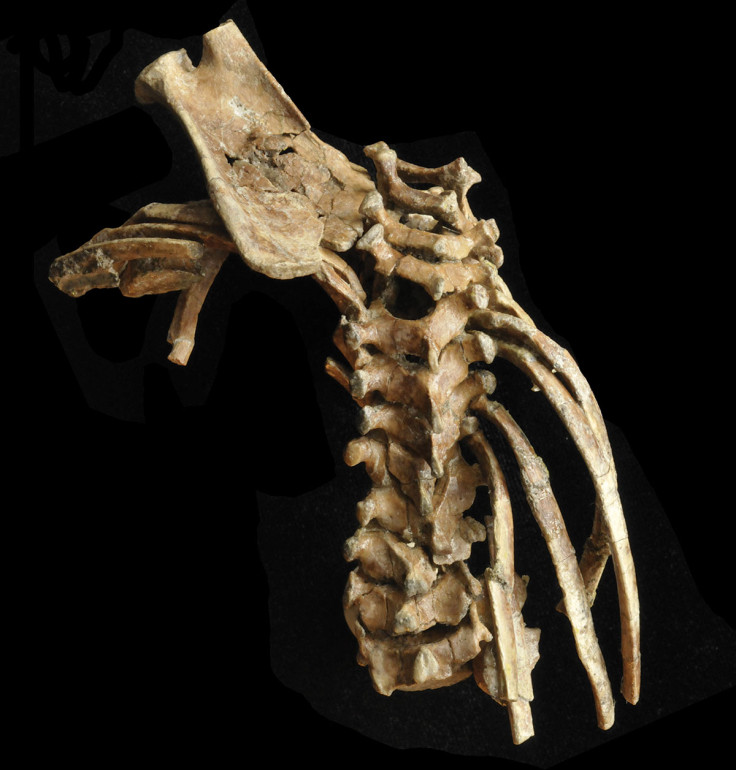Ethiopia: 3.3 million-year-old child skeleton rewrites history of how the human spine evolved
The skeleton could shed light on whether Australopithecus spent more time on in trees or on the ground.

The well preserved remains of a 3.3 million-year-old Australopithecus Afarensis have revealed that the spine of these early hominins was more similar to ours than to that of extant African apes. It counted 12 thoracic vertebrae, like the spine of modern humans, instead of 13.
Recovered in the mid-2000s in Ethiopia, the skeleton is that of a small child, who was probably two or three at the time of death. It was buried in a flash flood and its bones were found in a big sandstone block.
The bones are so small and delicate that it took over 13 years to mechanically removed stones around them. Even then, some of the bones could not be removed completely. Scientists had to use digital imaging to be able to isolate the bones and to analyse them – a long and painstaking process.
This little Australopithecus Afarensis skeleton has the only known complete cervical and thoracic vertebral column of any early hominin prior to 60,000 years ago. Being able to analyse it provides researcher with a lot of valuable information about the body structure of these early hominins, the way they walked and when the structure of modern human spines emerged.
"We have never known when the transition from African ape-like to human-like spinal structure took place because we never had a specimen that was so complete before. People have speculated about how these transitions took place, what the evolution of the human spine was like, but only now do we have the fossil evidence to test some of our ideas", Carol V Ward, from the Department of Pathology and Anatomical Sciences, University of Missouri, told IBTimes UK.
"Vertebrae and ribs are very fragile bones so they don't fossilise very commonly. We have only three or four early hominin skeletons that might have one or two vertebrae here and there, but never a whole series like we have here".
Tree climbers or walkers
In their paper now published in PNAS, Ward and colleagues set out to describe the skeleton in details, looking in particular at the vertebrae and their morphology.
The skeleton appears to have been made up of seven cervical and only 12 thoracic vertebrae like humans, rather than 13 like African apes. However, the anatomical transition from thoracic to lower back vertebral form occurs at the 11th thoracic segment – something that is rarely seen in modern apes and humans.
The study's findings indicate that the spine of early hominins was similar to ours, and that the child would have probably walked or moved in a similar way to us in adulthood. This provides scientists with new clues about the behaviours of early hominins and whether they would have been more likely to spend most of their time in trees or on the ground.
"There is still a debate about how much time these early hominins would have spent in trees vs the ground, how important it was. What this shows us is that there were no adaptation to stiffening the spine like we see for climbing low branches, but we can see that their ability to walk the way we did would have been fully developed, even if they did climb trees", Ward said.
© Copyright IBTimes 2025. All rights reserved.






















